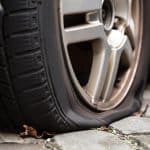Beginning in the late 18th century, engineers began to explore aerosolization, the process by which a liquid under pressure is converted to gas by way of a distributive solvent, propellant, and spray valve. By the late 1930s, aerosolization was down to a science, and the proliferation of aerosol-based products in the second half of the 20th century made life easier in many respects. It also made life worse. Health hazards of breathing in aerosolized gases became apparent, while propellants known as CFCs revealed themselves to be extremely harmful to the environment. Though we’ve reduced our use of aerosols, and safer propellants have replaced the CFCs that burned holes in the ozone layer, the dangers of aerosol products remain apparent for many people. Here are some of those hazards and how you can avoid them.
Video Summary
Aggravating Your Allergies
Whether you’re painting model cars for fun or doing chores around the house, you’re probably using aerosols. But the chemicals you release into the air while you’re doing so could be doing harm to your respiratory system. Many of the solvents and active ingredients in aerosols can cause allergic reactions that can cause frequent sneezing, trigger allergic asthma attacks, or even resemble persistent cases of sinusitis. If you find that you feel sick more often than you should, pursuing alternatives to aerosols around the house can reduce some of the symptoms you experience.
Chance of Explosion
Under extreme heat or extreme cold—and many parts of North America regularly experience both—aerosol cans can explode, causing chemical burns as well as lacerations from the shrapnel of the exploded canister. Keep aerosols such as spray paint and insecticide out of the garage during extreme weather periods where they would be susceptible to explosion. Also, keep spray cans out of direct sunlight when you’re using them in outdoor applications.
Environmental Damage
The revelation that chlorofluorocarbons, or CFCs, deal significant damage to the Earth’s ozone layer was a defining moment of the 1970s and a turning point in the then-nascent environmentalist movement. The Montréal Protocol of 1987 phased out CFC production in all but a few specific applications. While CFCs have given way to less harmful propellants, even the hydrocarbons and nitrous oxide that have replaced CFCs can still be harmful to the atmosphere, meaning we’re not out of the woods just yet regarding the dangers of aerosol products. If you’re conscious of going green and reducing your personal carbon footprint, cutting down on aerosol use can help you do your small part for the greater good.















